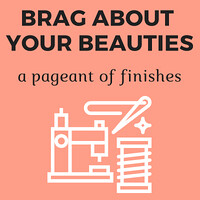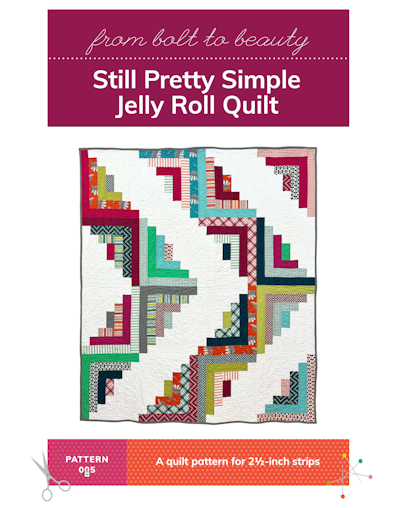The Double-Sided Diamond Quilt is one of my Almost Free for Charity PDF patterns.
It’s just $3 in my Etsy shop, $1 of which goes to an organization supporting the Down syndrome community.
* * *
I’ve been on a roll these past few weeks with posts about precuts. First, I revealed a finished quilt of 2.5-inch strips. Then I followed up with some recommended jelly roll patterns and projects for 2.5-inch squares. So I thought I’d talk a bit about layer cakes today.
First of all, for any precut newbies out there: Layer cakes are collections of 10-inch squares. Each one usually contains 42 squares, but that number can vary from one manufacturer to another.
I love layer cakes for their versatility—there are just so many smaller shapes I can cut from them! They’re also fabulous to use as 10-inch squares, however, and that was something I explored in this quilt ...
This is my Double-Sided Diamond Quilt, and it’s my love song to big blocks. The top uses 10-inch squares to supersize half-square triangles, creating a show-stopping project.
Because the top requires just 24 layer cake squares and the one I had contained 42, I designed a coordinating backing of small diamonds, making this project two quilts in one.
I’ve been meaning to make this pattern again but haven’t been successful fitting it into my to-sew schedule. The next-best option was to play with the design in Electric Quilt and explore the possibilities.
My original Double-Side Diamond Quilt was made with Little Ruby, a collection from Moda by Bonnie and Camille. Bonnie has since retired. Camille is still designing fabric, though, and most recent collection, Lighthearted, just shipped to stores this month. Lighthearted features the trademark B&C palette ...
I use so many solids as backgrounds, it was nice to see this design mocked up with those tiny hearts in the background.
And a backing that pulls out the pink (with just the slightest bit of orange) from the collection makes a beautiful companion for the front. Red and green is my favorite complementary pair. This mocked-up combination does not disappoint!
I’ll work on some additional mockups in the upcoming week. Do you have any requests? EQ and I are at your service!
The Double-Sided Diamond Quilt went out free to newsletter subscribers back in May. Now it is one of my Almost Free for Charity PDF patterns. It’s just $3 in my pattern shop, $1 of which goes to an organization supporting the Down syndrome community. (To subscribe to the newsletter and receive future free patterns in your inbox, click here.)
On that note, next month is Down Syndrome Awareness Month. To read about my story raising a son with Down syndrome, read this post.
Follow Me On ...
The pageant rules are simple:
- Post your finish in the linky tool. (No links to your own giveaway or linky, please!)
- Point your readers back here with a text link or use the button above.
- Visit and comment on other participants’ finishes.































